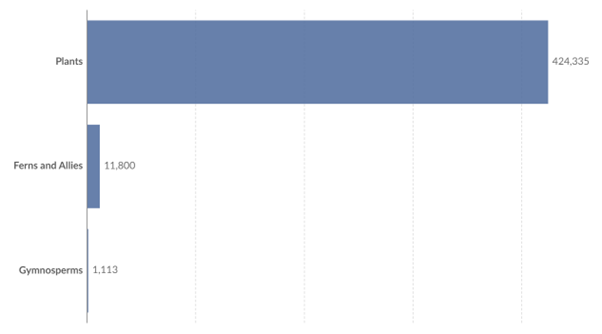|
|
Flora - TaxonomicModern forms of taxonomy have been present in literature for ~250 years, with origins of the currently used binomial nomenclature going back to the 18th century[3]. In the context of flora, application of this discipline is concerned with organisms that fit into the broad kingdom plantae. Of this, less than 5% of described plant species reside in the ocean[2]. Organising flora by species classification may assist with communication of where individuals and populations might occur. It may also help inform management processes that target species sharing common characteristics or closely-related ancestry. Quick facts
TaxonomyTaxonomy is a dynamic field of study concerning both the methods for classification and total described species. The field has seen huge shifts in recent years due to genomic sequencing technologies and access to refined sampling and monitoring techniques and equipment[1]. In its current form, taxonomy is an important tool for documenting flora biodiversity, as species classification is a primary factor in measuring species richness. Taxonomy also creates communication pathways as it allows stakeholders or stakeholder groups to discuss specific flora that share the same characteristics within, or across, environmental systems. WetlandSummary – species listsThe WetlandSummary tool provides a variety of flora species lists based on a specific area type. For example, native plant species found in the Brisbane River drainage sub-basin. More information on these lists is available at the bottom of every species list page in WetlandSummary. WildNetA select number of wetland-related fauna species are described in the pages below, however, for a comprehensive list of all species recognised across Queensland Government please refer to the WildNet database. Information in this database approved for publication is accessible via:
Flora linksReferences
Last updated: 12 June 2023 This page should be cited as: Department of Environment, Science and Innovation, Queensland (2023) Flora - Taxonomic, WetlandInfo website, accessed 18 March 2024. Available at: https://wetlandinfo.des.qld.gov.au/wetlands/ecology/components/biota/flora/flora-taxon/ |

 — Department of Environment, Science and Innovation
— Department of Environment, Science and Innovation


